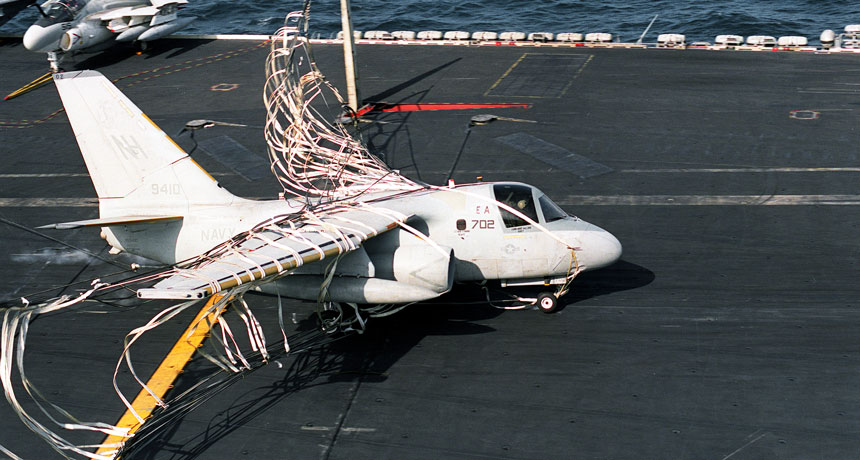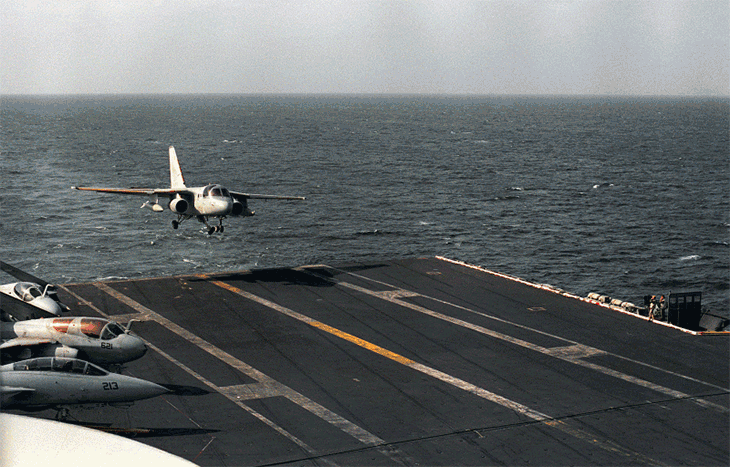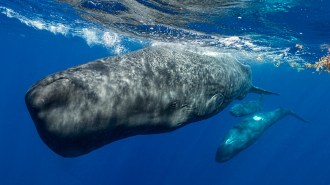50 years ago, engineers tried catching commercial planes in nets
Excerpt from the October 28, 1967 issue of Science News

This S-3 Viking aircraft used the barricade arrestment system on the USS Abraham Lincoln in 1990. It was unable to land with the normal tailhook system because its landing gear was damaged.
US Navy/Wikimedia Commons
 Net to halt runaway airliners
Net to halt runaway airliners





